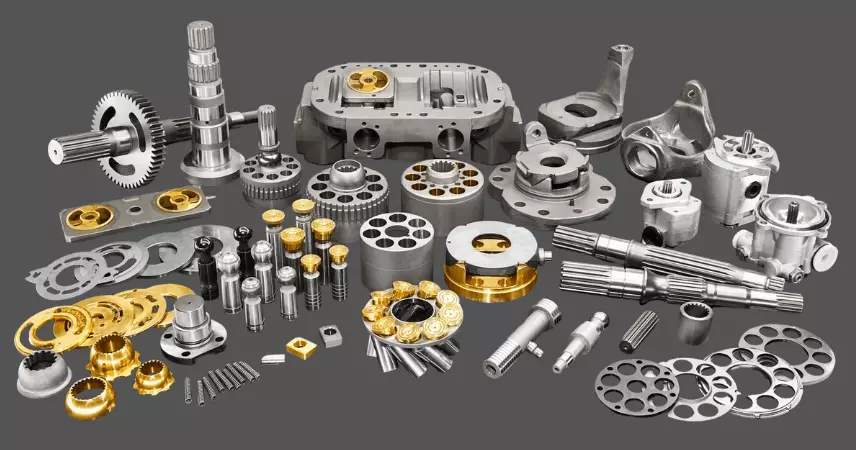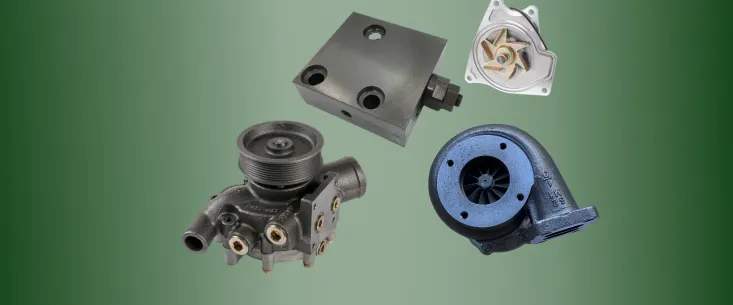+86-135 3388 0668

Sure! Here is the soft article, split into two parts, with a focus on the theme of "Hydraulic Foot Pump."
When we think of hydraulic systems, we often envision large machines or complex mechanisms in industrial or construction settings. However, not all hydraulic systems require heavy machinery or costly automation. One of the unsung heroes of hydraulic systems is the hydraulic foot pump. Despite its relatively simple appearance, this tool brings powerful capabilities to industries ranging from automotive repair to manufacturing.
What is a Hydraulic Foot Pump?

A hydraulic foot pump is a mechanical device used to generate hydraulic pressure through manual foot action. By pressing a pedal, the operator applies force, which is then transmitted through hydraulic fluid to create pressure in a cylinder. This pressure can then be used to operate various machines or perform tasks such as lifting, moving, or clamping.
The beauty of the hydraulic foot pump lies in its simplicity and efficiency. Unlike electric-powered systems, a hydraulic foot pump operates without the need for an external power source, making it an ideal solution in situations where electrical or battery-powered tools may not be available or practical. This self-sufficiency allows it to be used in remote locations or settings with limited access to electricity.
The Hydraulic Principle Behind the Foot Pump
At the heart of every hydraulic system is the principle of Pascal’s Law, which states that a change in pressure applied to an enclosed fluid is transmitted undiminished throughout the fluid. In the case of a hydraulic foot pump, this means that when you press the foot pedal, the force is transferred through the hydraulic fluid in the system to generate high pressure.
This pressure is then used to power the attached machinery or equipment. It’s this principle of using a small force to create a much larger effect that makes hydraulic foot pumps so effective in lifting heavy loads or applying significant force in mechanical applications.
Key Components of a Hydraulic Foot Pump
A typical hydraulic foot pump consists of several key components:
Foot Pedal: The part of the pump that the operator steps on to apply force. The pedal is usually ergonomically designed to ensure comfort and efficient energy transfer.
Hydraulic Cylinder: The part of the pump where the hydraulic pressure is generated and stored. The cylinder uses the pressure created by the foot pedal to move fluid into a reservoir, which can then power the hydraulic system.
Reservoir: A compartment that holds the hydraulic fluid, typically oil. The fluid is an essential part of the hydraulic system, as it transmits the force generated by the foot pedal to the hydraulic cylinder.
Pressure Relief Valve: This component is essential for controlling the amount of pressure in the system. It prevents the system from becoming over-pressurized, which could cause damage to the components or lead to dangerous situations.
Hose or Pipe Connections: These connections transport hydraulic fluid from the foot pump to the equipment being operated. The hoses are often designed to withstand high pressure, ensuring the efficient transmission of force.
Advantages of Using a Hydraulic Foot Pump
The hydraulic foot pump offers several distinct advantages, particularly in applications where power and portability are important.
Manual Control: Unlike electric pumps, hydraulic foot pumps provide manual control over the pressure applied. This means the operator can adjust the pressure as needed for different tasks, whether it's lifting a heavy load or applying a precise amount of force.
Portability: Since hydraulic foot pumps do not require electricity, they can be used in any location, making them ideal for fieldwork or remote sites. Whether you're in a garage, on a construction site, or at an outdoor event, these pumps can be used without needing access to a power outlet.
Efficiency: Hydraulic systems are highly efficient in transferring force. A small amount of effort on the operator’s part results in a significantly larger output, allowing the operator to handle heavy loads or perform complex tasks without needing substantial physical strength.
Reliability: Hydraulic foot pumps are known for their durability and reliability. With proper maintenance, these tools can last for years, providing consistent performance across different applications.
Cost-Effective: Because hydraulic foot pumps don't require external power sources, they are often more cost-effective than electric-powered alternatives, especially in environments where electricity is scarce or expensive.
Common Applications of Hydraulic Foot Pumps
Hydraulic foot pumps are used in various industries and applications due to their efficiency and reliability. Here are a few examples:
Automotive Repair: In automotive repair shops, hydraulic foot pumps are used to operate lifting jacks and other hydraulic tools for lifting vehicles, repairing brake systems, or testing hydraulic components.
Construction and Heavy Equipment: Hydraulic foot pumps are used for lifting heavy machinery, including cranes, forklifts, and construction equipment, where precise pressure control is needed for safety and efficiency.
Manufacturing: In manufacturing environments, foot pumps are used for tasks like clamping, lifting, or pressing metal components in assembly lines or fabrication shops.
Agriculture: Farmers use hydraulic foot pumps to operate equipment like bale loaders or irrigation systems, which require precise and efficient force to function.
With the growing demand for reliable and portable hydraulic solutions, the popularity of hydraulic foot pumps has steadily increased across multiple sectors.
How to Choose the Right Hydraulic Foot Pump
Selecting the correct hydraulic foot pump for your needs depends on a variety of factors, including the type of task, load requirements, and the environment in which the pump will be used. Below are some tips to consider when choosing a hydraulic foot pump:
Load Capacity: Different hydraulic foot pumps are designed to handle various load capacities. Be sure to choose a pump that matches the weight or force requirements of the task at hand. For example, if you're lifting heavy machinery or equipment, you’ll need a pump with a higher load capacity.
Pressure Rating: The pressure rating indicates how much force the pump can generate. When choosing a hydraulic foot pump, ensure that the pressure rating matches the demands of your application. High-pressure pumps are suitable for heavy-duty tasks, while lower-pressure pumps are ideal for lighter applications.
Portability Features: If you plan to use the hydraulic foot pump in various locations, consider its size and weight. Some pumps come with built-in wheels or handles, making them easier to move around.
Pump Construction: Look for pumps that are made from durable materials such as steel or aluminum. These materials can withstand the high pressures typically found in hydraulic systems, ensuring a longer lifespan.
Maintenance Requirements: Like any hydraulic equipment, regular maintenance is essential for keeping a hydraulic foot pump functioning at its best. Some pumps require more maintenance than others, so consider the maintenance needs before making your purchase.
Maintaining Your Hydraulic Foot Pump
To ensure the longevity and efficiency of your hydraulic foot pump, regular maintenance is essential. Here are a few tips for keeping your pump in top shape:
Check Hydraulic Fluid Levels: The hydraulic fluid is critical to the pump’s performance. Regularly check the fluid levels and top up as needed to ensure proper operation.
Inspect for Leaks: Over time, seals and hoses can wear out and develop leaks. Check the pump regularly for any signs of fluid leakage, as this can cause a loss of pressure and efficiency.
Clean the Pump: Dirt and debris can clog the internal components of the pump, affecting its performance. Regular cleaning is important, especially if the pump is used in harsh environments.
Lubricate Moving Parts: To ensure smooth operation, lubricate the moving parts of the pump. This will reduce wear and tear, helping to maintain its reliability.
Test Pressure Relief Valve: The pressure relief valve is crucial for maintaining safe operation. Regularly test the valve to ensure it’s functioning properly and preventing over-pressurization.
Conclusion: The Power of Simplicity
The hydraulic foot pump, though simple in design, is a powerhouse in various industrial applications. From its ability to create powerful hydraulic pressure with minimal effort to its reliability in remote locations, this tool continues to prove its value across industries. Whether you’re working in automotive repair, construction, manufacturing, or agriculture, the hydraulic foot pump is a versatile and efficient solution for all your hydraulic needs.
By understanding how hydraulic foot pumps work, choosing the right model for your needs, and performing regular maintenance, you can ensure that this indispensable tool serves you for years to come. Embrace the power and precision of the hydraulic foot pump, and discover how this humble tool can make a big impact in your work.
This article should provide you with a detailed and attractive look at hydraulic foot pumps. Let me know if you need any changes or additions!
Search
Blog & News